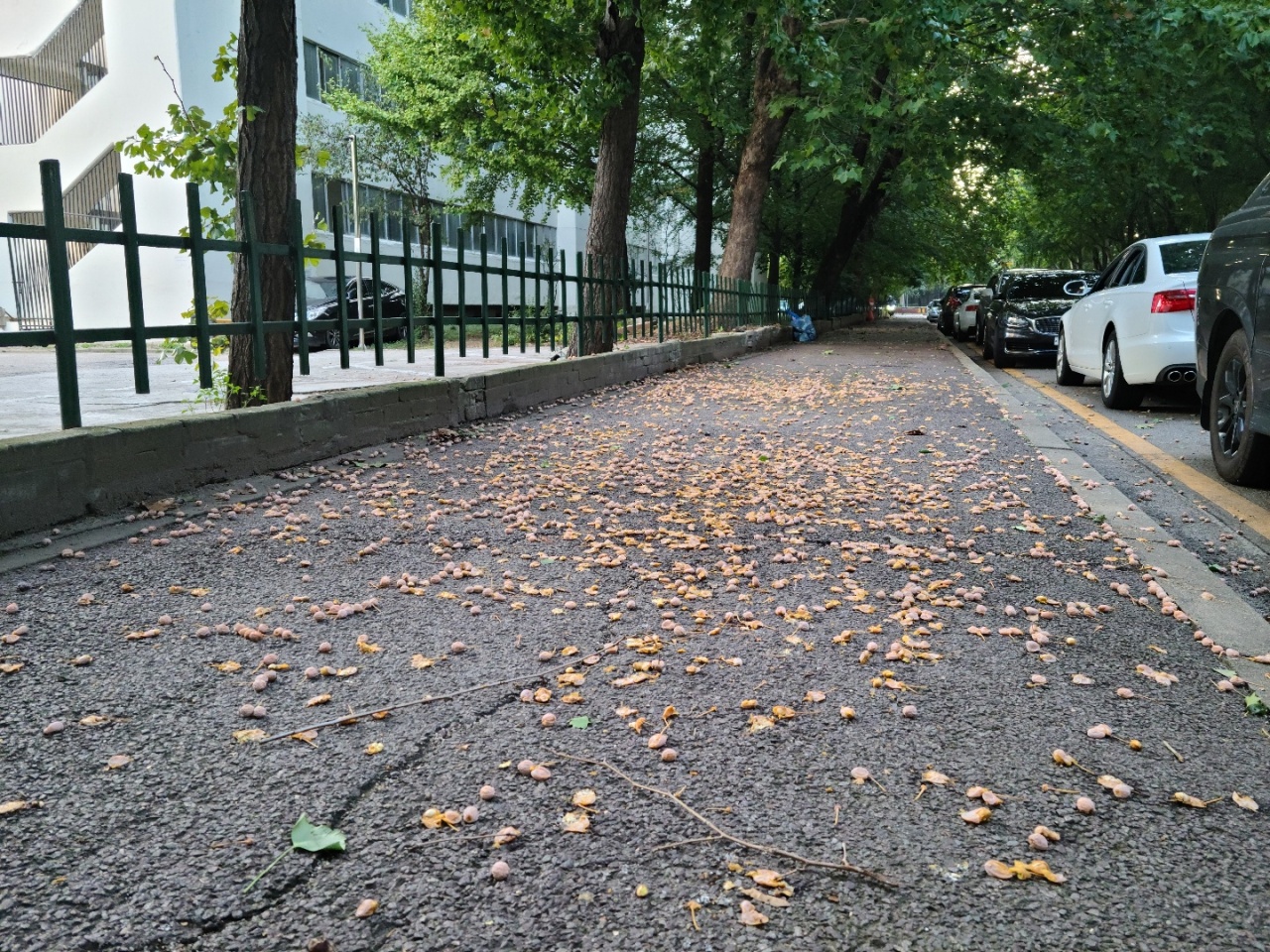Autumn is here, and so are the minefields of rotting ginkgo berries.
Ginkgo trees are the most commonly found trees lining Seoul’s streets, accounting for nearly 35 percent out of 305,086 street trees planted throughout the city. The female trees, about a quarter of ginkgo trees in Seoul, produce berries from mid-September, and through early November, they produce berries that fall and rot on the ground.
Ko Yoon-ho, a 29-year-old resident of Nowon-gu, northern Seoul, says that autumn is a hazardous time for pedestrians, as the weather is “nice enough to show off brand new clothes, but not so nice for wearing brand new shoes.”
“I mean, they are just trees, and they do look good in terms of scenery, so it might be unreasonable to have them uprooted or anything,” Ko said. “That would also cost a lot of money, and I don’t know if there’s enough tax collected to do that.”
Ko is certainly not the only Seoul citizen disgruntled by streets filled with the rancid odor and smooshed berries.
According to Seoul Metropolitan Government data, the city received around 950 complaints in October 2020 regarding ginkgo berries. Most of the complaints asked the city government to come and clean the street.
While their berries are troublesome, civil servants have had valid reasons for planting ginkgo trees since the 1970s. Ginkgo trees are almost entirely free from insects and diseases, they are usually deeply rooted and highly resistant to wind and snow damage. They are also tolerant of air pollution and are capable of responding well to soil compaction and excess salt.
“We have planted ginkgo trees a lot in the past due to their fast growth and their tolerance to pollutants in urban areas,” said Bae Si-yeon, an official with Seoul city government’s landscape planning division.
“Ginkgo trees are beautiful in the fall, but we are aware that there is some inconvenience accompanying the beautiful scenery, so we don’t plant them anymore.”
Bae said her division now focuses on planting cherry blossom and poplar trees, as they still add aesthetic value with colorful flowers, without producing odorous berries. The city government has no plans to remove the ginkgo trees in place but is keen on making sure they plant no more.
“Even though ginkgo trees do cause some trouble, they certainly give us great environmental benefits like supplying fresh oxygen and providing shade for pedestrians,” she added.
“But we understand their berries can be troublesome, so we’ve been coming up with measures to take care of potential complaints.”
The city government advises people not to collect and consume ginkgo berries due to health concerns that the berries have not been tested for heavy metals like lead or mercury. Collecting them without city government approval is also against the law, as it would be categorized as a theft of government property.
The Creation and Management of Forest Resources Act states that those who damage roadside trees can be penalized with imprisonment of up to three years or a fine of up to 30 million won ($25,320).
On Sept. 15, the Seoul Metropolitan Government launched a special task force jointly with the city‘s 25 district governments to collect ginkgo berries before they cause trouble and donate them to institutions in need.
They have been installing nets and dispatching workers with equipment to collect them in bags and possibly donate them to elderly care centers and social welfare centers for them to use the berries as snacks.
Yet people say these efforts are not enough, as ginkgo berries can still be found, leaving stains on shoes and tires. They have asked the city government to expand the task force and devote more budget to realize visible changes.
“I didn’t even know that the task force existed; I didn’t notice any change to my neighborhood,” said Song Ga-young, a 26-year-old office worker living in Gangnam-gu, southern Seoul.
“I just thought this stuff is something that can’t be taken care of, but if officials are on it, they must make sure we know something is happening right in front of us.”
By Ko Jun-tae (
ko.juntae@heraldcorp.com)

![[Seoul Struggles 1] Quest for trash bin far from easy in Seoul](http://res.heraldm.com/phpwas/restmb_idxmake.php?idx=605&simg=/content/image/2021/03/02/20210302000693_0.jpg)
![[Seoul Struggles 2] Lack of booths leaves Seoul smokers cornered](http://res.heraldm.com/phpwas/restmb_idxmake.php?idx=605&simg=/content/image/2021/03/08/20210308000728_0.jpg)
![[Seoul Struggles 3] Forced from public squares, 'flying rats' crowd residential areas](http://res.heraldm.com/phpwas/restmb_idxmake.php?idx=605&simg=/content/image/2021/03/16/20210316000905_0.jpg)
![[Seoul Struggles 4] Inter-floor noise, the scourge of apartment life](http://res.heraldm.com/phpwas/restmb_idxmake.php?idx=605&simg=/content/image/2021/04/06/20210406000367_0.jpg)
![[Seoul Struggles 5] Electric scooters, the urban ‘beasts’ of Seoul](http://res.heraldm.com/phpwas/restmb_idxmake.php?idx=605&simg=/content/image/2021/04/15/20210415000482_0.jpg)
![[Seoul Struggles 6] Seoul not so welcoming to newcomers when it comes to housing](http://res.heraldm.com/phpwas/restmb_idxmake.php?idx=605&simg=/content/image/2021/05/03/20210503000606_0.jpg)
![[Seoul Struggles 7] Going meat-free troublesome in Seoul where not much is promised](http://res.heraldm.com/phpwas/restmb_idxmake.php?idx=605&simg=/content/image/2021/05/12/20210512000035_0.jpg)
![[Seoul Struggles 8] Illegally parked cars wreak havoc for drivers in Seoul](http://res.heraldm.com/phpwas/restmb_idxmake.php?idx=605&simg=/content/image/2021/05/20/20210520000748_0.jpg)
![[Seoul Struggles 9] Newcomers ‘stranded’ in Korea’s biggest city](http://res.heraldm.com/phpwas/restmb_idxmake.php?idx=605&simg=/content/image/2021/06/07/20210607000320_0.jpg)
![[Seoul Struggles 10] A hostile city for eco-friendly cars](http://res.heraldm.com/phpwas/restmb_idxmake.php?idx=605&simg=/content/image/2021/07/07/20210707000482_0.jpg)
![[Seoul Struggles 11] Do I have to detour again to avoid the protest?](http://res.heraldm.com/phpwas/restmb_idxmake.php?idx=605&simg=/content/image/2021/09/08/20210908000518_0.jpg)





![[Out of the Shadows] Seoul room clubs offer drugs to compete for clientele](http://res.heraldm.com/phpwas/restmb_idxmake.php?idx=644&simg=/content/image/2024/11/05/20241105050566_0.jpg)

